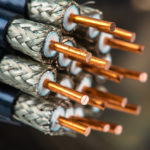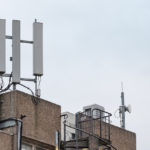Materials like glass, hard wood, drywall, brick, concrete, and metal can all cause building occupants to receive poor cell phone reception.
Glass
Despite being transparent, clear glass reflects radio frequencies. Even low-energy glass can bounce cell tower signals back, preventing them from entering a building.
Wood
Depending on the type of wood used to construct the building, it may interfere with cell phone reception. The more solid the wood, the more likely it is to cause connection problems. However, even thin plywood can cause issues.
Drywall and Insulation
The more layers of building material used in construction, the harder it is to connect to cell towers while inside. The case is unfortunately that the more thorough job a construction company does, the poorer cell reception occupants can expect to get.
Brick
While most commercial buildings aren’t made of brick these days, it still may cause issues when trying to use a cell phone in the building. The thick-packed clay used to make bricks nearly shuts out all cell signals.
Concrete
Concrete is one of the most common modern building materials. Used in schools, hospitals, offices, and high-rises, concrete is often to blame for weak cell signal in buildings. The basements of concrete buildings are especially difficult to receive signals in.
Metal
Another common modern building material is metal because of its relatively low cost. It is very difficult to get a cell phone signal through this material, regardless of whether you use aluminum, steel, brass, iron, or any other type of metal. Even a standard metal roof can cause cell phone signal drops.
These materials that cause poor cell phone reception are necessary for most construction companies. People need sturdy buildings to live and work in. To counter poor reception, install a distributed antenna system to boost your signal. Contact our experts today to get started on your cellular DAS solution!







